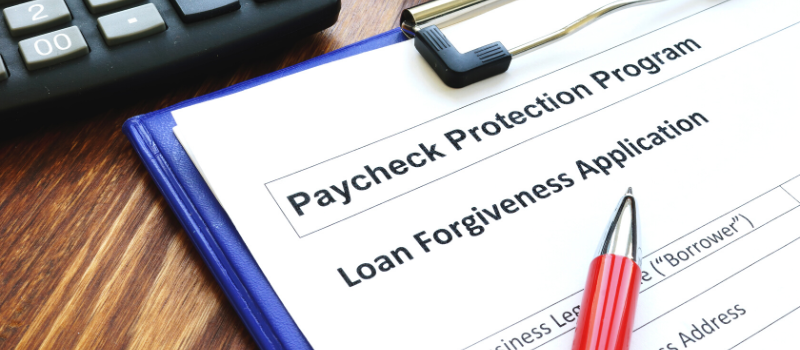Introduction
In Francis Ford Coppola’s masterpiece, The Godfather- Part II, Signor Roberto (“Roberto”) was a slum landlord in New York City. One of his tenants, Anita Colombo (“Anita”), was unable to pay the rental increase demanded by Roberto. Additionally, Anita had a small puppy for a companion. Because of this, Roberto threatened to evict Anita. Desperately wanting to remain in her apartment, Anita reached out to her friend Carmela Corleone (“Carmela”). Carmela arranged a meeting between Anita and Carmela’s husband, Vito Corleone (“Godfather”). Upon hearing of her plight, the Godfather visits Roberto and offers him a 6 months advance of the rental increase demanded by Roberto. Not knowing who the Godfather was, Roberto resisted taking the advanced rental assistance but the Godfather gave Roberto the money anyway. After asking around the neighborhood about the Godfather, Roberto capitulated. He returned 100% of the advance rental assistance to the Godfather, exclaiming, “The rent stays like before!!!” In fact, Roberto actual winds up lowering Anita’s monthly rent, and allows her dog to stay!
CARES Act
The original CARES Act (“CARES”) was signed into law on March 27, 2020. CARES established many programs designed to provide rental assistance for owners and renters affected by the coronavirus.
Temporary Eviction Moratorium (“TEM”)
TEM essentially provided a temporary eviction moratorium on eviction filings related to rentals that qualified under the following programs:
- Rentals covered under the Violence Against Women Act
- Rentals covered by the Rural Housing Voucher Program
- Rentals encumbered by a federally backed mortgage or multifamily loan
Under TEM, a 120-day eviction moratorium was authorized essentially prohibiting any landlord from adding late fees, penalties or other late payment charges attributable to the rent due. It is prudent to note that the tenant was not relieved of the obligation to remit the rental payment to the landlord. It only prohibited the landlord from adding the fees discussed above. Once the 120 day moratorium expired, the landlord was entitled to issue a notice to vacate to a tenant, but was required to give the tenant an additional 30 days in which to leave the premises. Unfortunately, the time period to qualify under the EMP expired on August 24, 2020 and is no longer available. The Center of Disease Control and Prevention (“CDC”) did stepped in and controversially issued an additional temporary moratorium on evictions that started in September 2020 but was set to end on December 31, 2020.
Multi-Family Loan Forbearance Program (“LFP”)
CARES authorized mortgage loan forbearance for owners of rentals covered by the types of properties described in the TEM section above. Owners of such properties were required to certify that the COVID-19 outbreak triggered the requested financial relief. Owners essentially could request forbearance from a loan servicer for 30 days, with the option of receiving two more 30 day forbearance periods, for a total of 90 days. In order to receive the additional 60 days of forbearance, the owner was required to document the hardship. During this period, owners were prohibited from adding late fees, penalties or other late payment charges attributable to the rent due.
Housing and Urban Development (“HUD”) Rental Assistance Programs
CARES authorized approximately $18 billion to be earmarked to HUD for several different programs designed to relieve individuals of the burden of remitting rental payments due to Covid-19. Of the allotted $18 billion, $1.25 Billion was earmarked for the Tenant Based Rental Assistance Program (“TBRA”). Additionally, $685 million was allocated for the Public Housing Operating Fund (“PHOF”). Furthermore, $5.0 billion was allocated to the Community Development Fund (“CDF”) Essentially, HUD was to work with individual states via the TBRA, PHOF, and the CDF. These programs were essentially developed to provide direct assistance for rent payments, vouchers for private and public housing, as well as housing for senior citizens. The funds distributed to the states, under these programs, must be spent specifically for the prevention of, preparation for, and response to the Coronavirus and benefit low- and moderate-income households. It is prudent to note that each separate state had its own unique set of eligibility requirements and application process. Some states prioritized the distributions of funds first to nonprofit providers and later to for profit providers. Fortunately,$300 million still remains unspent within these programs. So, applicants can still apply while the money is available. Finally, CARES funded certain Homeless Assistance Grants (“HAG”), in the amount of $4 billion. HAG was created to provide homeless assistance and prevention to mitigate the financial hardships due to COVID -19. These grants are still available and are set to expire on September 30, 2022.
Rental Assistance 2.0
Congress passed the Consolidate Appropriations Act (“CAA”) on December 22, 2020. One of the provisions of CAA was the designation of $25 billion earmarked for emergency rental assistance. At this time, it is unknown exactly how the $25 billion dollars will be split between some or all of the programs described below. What is certain is that these available funds will most likely be limited to two specific categories of renters. It appears that only lower income or jobless renters will be entitled to the $25 billion. Fortunately, almost $300 million is still available for these other programs under the original CARES. CAA would only authorize these funds to states and municipalities that agreed to a very specific application process. Only applications from households earning no more than 50 percent of an area’s median income, or who have at least one unemployed member who has been out of work for 90 days or more, would be eligible.
Finally, CAA authorizes the CDC to extend the deadline for the temporary moratorium on evictions, set to expire on December 31, 2020, for an additional 30 days. The reason for the 30 day extension was to allow the new administration to deal with this issue after the inauguration.
Conclusion
The recent passing of CAA authorizing an additional $25 billion, as well as the remaining $300 million still available under CARES, both provide some much needed relief to the millions of taxpayers who are having difficulty making their monthly rental payments. Additionally, many states and municipalities still offer their own rental assistance program. Not every neighborhood has a leader like Don Corleone to provide individual rental assistance to the members of his community. But, the CAA has authorized additional rental assistance and has made an offer to potential renters, due to the coronavirus, that they shouldn’t refuse.
Author: Jeffrey Clayman | [email protected]
Withum tax advisor if you have additional questions or concerns.



